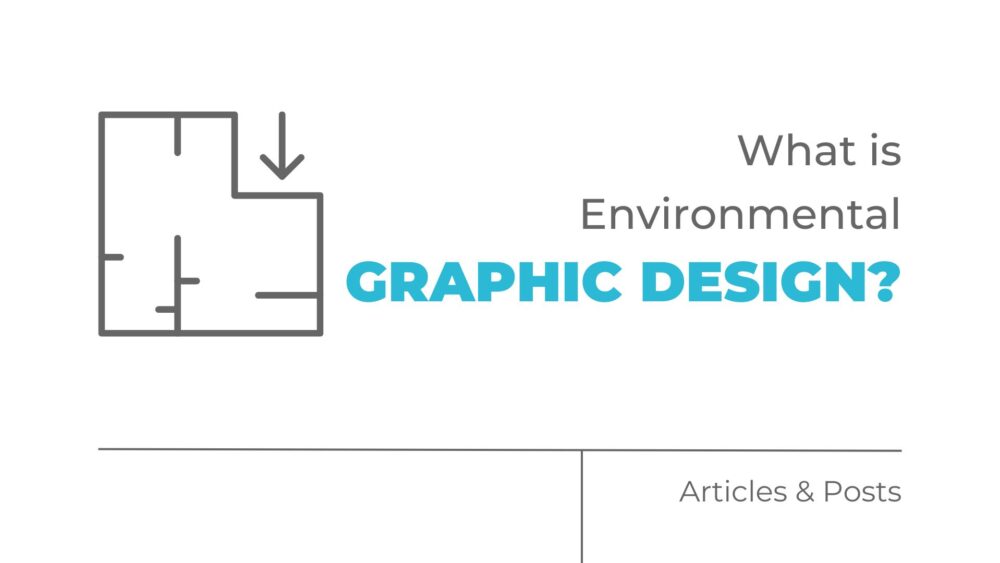What is environmental graphic design?
It’s a fascinating blend of several kinds of design:
- graphic design
- architecture
- interior design
- landscape design
- and industrial design
The environmental designer creates visually appealing and functional spaces.
Environmental design helps turn a space into an experience, guiding you through it and telling a story.
Environmental designers make places like museums, airports, stores, and offices not just look good, but also work well and feel welcoming.
Environmental graphic design uses visuals to make spaces more fun, easy to find your way, and enjoyable.
Think about the signs in a mall that help you find a store or the cool wall graphics in a trendy office.
This field is all about making those elements fit together seamlessly and make sense.
What are the Components of Environmental Graphic Design?
Environmental graphic design is made up of a few key parts, each adding to the overall feel and function of a space.
Let’s break it down:
Signage and Wayfinding
Ever felt lost in a big building?
Good signage and wayfinding help you get where you need to go without frustration.
It’s like having a helpful guide in sign form, making sure you know exactly where to turn next.
Identity and Branding
This is all about making sure a space screams your brand’s name, even without you saying a word.
From the colors and fonts to the logos, everything in the space should remind visitors of your brand.
Exhibit Design
For places like museums or trade shows, exhibit design is key.
It’s about making displays that catch your eye and make you want to learn more.
Think of those cool, interactive displays that make information fun and accessible.
Public Art
Public art adds personality and culture to a space.
Murals, sculptures, and installations not only look great but can also tell a story or reflect the community’s vibe.
Interior Graphic Design
This includes all the graphic elements inside a space – like wall graphics, floor designs, and decorative features.
It ties everything together to create a cohesive and inviting atmosphere.
How Does Environmental Graphic Design Benefit Businesses?
Environmental graphic design offers a lot of perks for businesses, making spaces not just look good but also work better.
Here’s how:
Enhances Customer Experience
A well-designed space makes customers feel comfortable and happy.
When people enjoy being in your space, they’re more likely to stay longer and come back.
Strengthens Brand Identity
When your brand is reflected in your physical space, it becomes more memorable.
Consistent use of your brand’s colors, logos, and style helps reinforce who you are and what you’re about.
Improves Navigation and Accessibility
Clear signs and wayfinding make it easy for customers to find what they’re looking for.
This is super important in big places like malls, hospitals, and airports.
Increases Engagement and Interaction
Interactive displays and engaging designs make people want to stick around and explore.
This can be a big boost for places like museums or retail stores.
Boosts Employee Productivity and Morale
A great-looking and well-functioning workspace can make a big difference for employees.
When your workspace reflects your company’s values and is pleasant to be in, it can really boost morale and productivity.
How is Environmental Graphic Design Different from Traditional Graphic Design?
While both involve design principles, environmental graphic design and traditional graphic design are quite different in their focus and application.
Here’s a look at how they compare:
Focus on Physical Space
Environmental graphic design is all about the physical space, whereas traditional graphic design is usually for digital and print media.
Environmental designers think about things like lighting, materials, and how people move through a space.
Multidisciplinary Approach
Environmental graphic design combines elements from various fields like architecture, interior design, and industrial design.
Traditional graphic design is more focused on visual communication through digital and print media.
User Experience and Interaction
A big part of environmental graphic design is how people interact with the space.
Environmental designers create spaces that guide and engage users.
Traditional graphic design is more about visual appeal and clear communication.
Scale and Complexity
Environmental graphic design often deals with larger and more complex projects compared to traditional graphic design.
It’s about designing whole environments rather than just individual graphics.
Purpose and Function
Environmental graphic design aims to make spaces not only look good but also function well and provide a great experience.
Traditional graphic design focuses more on visual appeal and communication.
At the End of the Day
Environmental graphic design brings spaces to life in ways that traditional design just can’t.
It mixes art, function, and a touch of magic to create places people enjoy.
Whether you’re a business looking to stand out or just someone who appreciates a well-designed space, environmental graphic design has something special to offer.


Comments are closed.